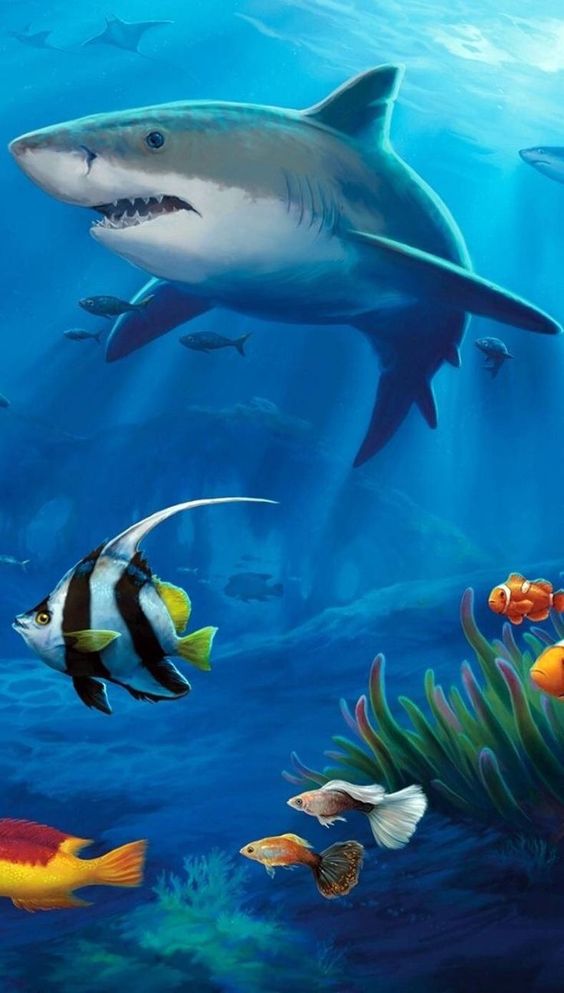1. There are more than 400 different species of sharks in the world.
2. Sharks have lived on Earth for approximately 450 million years, longer than dinosaurs.
3. Most sharks give birth to live young, known as pups, but some lay eggs that hatch later.
4. Sharks have a remarkable sense of smell, which helps them locate their prey from miles away.
5. Instead of bones, a shark’s skeleton is made up of cartilage, a lighter and more flexible material.
6. A shark’s skin is covered in tiny tooth-like scales called denticles, providing protection and reducing drag while swimming.
7. Some species of sharks, like the Great White shark, can swim at speeds reaching 25 miles per hour.
8. The Whale shark is the largest fish in the world, reaching up to 40 feet in length and weighing around 20 tons.
9. The smallest shark species is the Dwarf Lanternshark, measuring at just 7 inches long.
10. Not all sharks are carnivorous; some larger species like the Basking shark and Whale shark feed on plankton.
11. The Megalodon was an ancient prehistoric shark that lived millions of years ago and could grow up to 60 feet long.
12. Sharks shed their teeth regularly, and some can have thousands of teeth throughout their lifetime.
13. Some deep-sea sharks, like the Goblin shark or the Lanternshark, emit a glow called bioluminescence to attract prey or communicate with other sharks.
14. Hammerhead sharks have a unique head shape that helps increase their sensory abilities and improve maneuverability while searching for food.
15. A group of sharks is called a shiver or sometimes even a school or frenzy.
16. Nurse sharks are one of the few species that rest on the ocean floor during the day and become active hunters at night.
17. Not all sharks are dangerous to humans. In fact, the vast majority of sharks have little or no interest in attacking people.
18. The most common types of sharks involved in unprovoked attacks on humans are the Great White shark, Tiger shark, and Bull shark.
19. Sharks have a unique ability to heal, and their wounds can regenerate faster than most other animals.
20. The Thresher shark has an unusually long tail, which it uses to stun or knock out its prey.
21. Some sharks, like the Blacktip Reef shark and Spinner shark, breach the water’s surface and perform acrobatics while hunting for prey.
22. The Sawshark has a snout with tooth-like protrusions used to slash through schools of fish.
23. Sand Tiger sharks swallow air at the surface to help them maintain buoyancy while underwater.
24. The Angel shark looks like a ray due to its flattened body, camouflaging itself on the ocean floor to ambush its prey.
25. Contrary to popular belief, only about 10 shark species out of more than 400 are considered dangerous to humans.
26. Leopard Sharks have beautiful spotted patterns on their skin that help them blend in with their environment.
27. Many sharks can be found in warm shallow waters but some, like the Greenland Shark, can survive in extremely cold temperatures as well.
28. Some species of shark migrate thousands of miles every year following seasonal changes in ocean temperature and food sources.
29. Sharks play a vital role in maintaining balance within ocean ecosystems, keeping populations of other marine life stable and healthy.
30. Unfortunately, due to overfishing and habitat destruction, around 100 million sharks are killed by humans each year, leading to many species becoming endangered or threatened.





